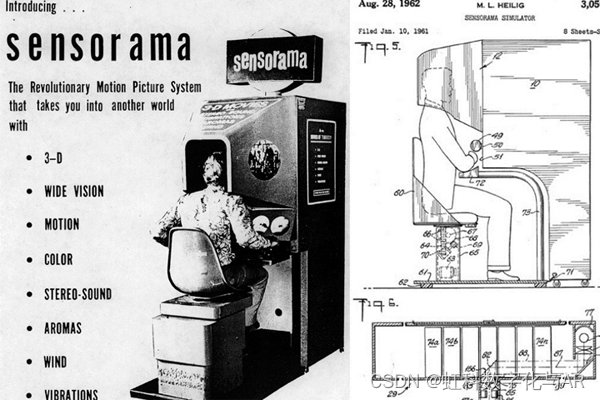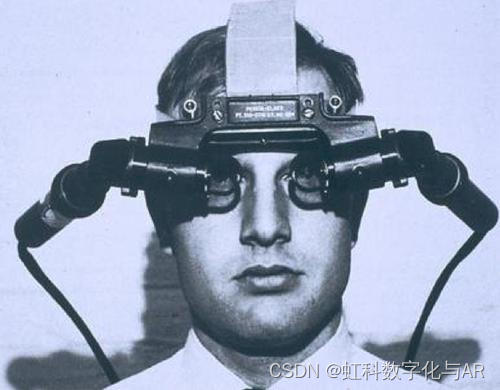Introduction:Augmented Reality (AR) technology has become very popular in recent years. You may have seen it in film and television works such as "Ready Player One" or "Black Mirror" You may have seen people’s fantastic ideas about AR technology, or you may have learned about concepts such as the “metaverse” and “digital twin” from popular science articles. You may also have personally experienced AR glasses and applied them to your Leisure, entertainment and daily work. But for most people, AR technology is still an emerging and evolving technology, but don’t worry, this article will review the development history of AR with you, after a brief reading, I believe you will have a clearer understanding of the potential and future development direction of AR technology.
 A brief history of AR development
A brief history of AR development
The history of AR is much longer than people imagine. We can boil it down tothree stages:
Stage 1: Early 20th century to 1990s (conceptual development period)
This period is a period of slow development of concepts related to augmented reality. At this time, textile machines strengthened human hands, trains strengthened human legs, and computers strengthened human brains. People turned their attention to the senses: vision, hearing, smell, touch, and taste. Yes, this was the birth of enhancement. The original definition of reality technology-Technology that extends the perception and interaction of the real world.
With this definition, Morton Heilig designed the multi-sensory (multi-modal) display Sensorama in 1957. This device simulated human vision through a color display, stereo speakers, odor emitters, and fans. Hearing, smell, and touch, it can be used to simulate motorcycle driving or airplane driving scenes. This invention pioneered the transmission of human senses through physical devices. The idea of information, but this device also has its shortcomings, that is, the scenes it simulates can only be preset and cannot be changed in real time based on human behavior. Multi-sensory (multi-modal) display Sensorama In 1956, Sutherland proposed the idea of the Ultimate Display (The Ultimate Display), proposing to sense the user's behavior. Generate a computer image that is synchronized and interactivewith it. 
Adhering to this concept, Sutherland designed the Optical See-Through Head Mounted Display (OSTHMD) in 1968 based on mechanical three-dimensional sensors, rendering computers and other equipment. This display not only realized /span>Sutherland device form, known as the originator of today’s augmented reality devices. Similarly, in addition to being limited by insufficient computing power at the time, this device also had the problem of being too heavy, and it was nicknamed the "Sword of Damocles" for this reason. Optical see-through helmet-mounted display designed by head-mounted and virtual screen and display screen also realizes the superposition of The concept of synchronization and interaction
Stage 2: 1990s to early 21st century (concept establishment and basic technology research and development period)
At this time, very large-scale integrated circuits were developing rapidly, computers were developing towards high performance and ultra-miniaturization, and electronic products were developing towards mobility and wearability.
In 1900, Caudell et al. clearly named the technology of using a see-through helmet-mounted display (HMD) to display images corresponding to the user's position as augmented reality.
In 1994, Junichi Sakakimoto first developed an augmented reality navigation system that uses image patterns (QR codes) as markers. This convenient and efficient interaction method is still used in today’s takeout counters, shared bicycles and other equipment. widely used.
During this period, optical fiber communication technology was also booming, and optical waveguide imaging devices based on the total reflection principle in optical fiber communication gradually became reality from drawings.
The definition of augmented reality was also solidified at this time. Ronald Azuma of the University of North Carolina proposed three important factors of augmented reality in 1997:Virtual and real fusion, real-time interaction and three-dimensional registration are now widely known as the narrow definition of augmented reality.
Stage three: after 2000 (market period, rapid development period)
This period is when augmented reality technology began to become popular.
In 2003, Wagner et al. successfully implemented augmented reality applications on tablet computers, a mobile terminal.
In 2007, SCE (Sony Computer Entertainment Inc) released the first augmented reality game "THE EYE OF THE JUDGEMENT".
In June 2009, the Google search keyword "augmented reality" received more attention than "virtual reality" for the first time
Since then, augmented reality technology has begun to reach thousands of households. Not only has it given birth to technical branches such as VR, AR, MR, and For example, doctors in the operating room can wear AR glasses to transmit the first-person view of the operating room in real time. Front-line operators can also wear AR glasses to view maintenance procedures, product drawings and other information, freeing their hands and improving production efficiency and safe operation quality. .
I believe that with the development of technology, AR will continue to improve in terms of battery life, comfort, performance, and functionality, and will have broader application prospects.